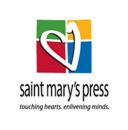Recent Updates
Click here for updated information about mask requirements (12/10/21)
Click here for updated information from the Department of Health (8/9/21)
WHERE TO START…
 Read the Diocese of Rochester Curriculum
Read the Diocese of Rochester Curriculum
Click here for an overview of the Diocese of Rochester K- Confirmation Curriculum
Remember that your textbook series is not your guide — it’s a tool to help you with your goal. The Curriculum is your guide!
Then, consider these BIG questions if you are planning to return IN PERSON…
- Are you able to physically SOCIAL DISTANCE your learners? Are your rooms big enough? Are your numbers low enough?
- If not, are you willing and able to add more in-person date/time choices for faith formation?
- How will you insure that participants will not gather or congregate before of after sessions/events?
- Do you have enough catechists to accomodate smaller groups of learners?
- Do you have the capacity/staff/equipment to completely sanitize after each session/gathering?
Click here for the NYS guidelines for Religious and Independent Schools on outside use of schools: Click here
 Then, TALK TO YOUR PARISH FAMILIES…
Then, TALK TO YOUR PARISH FAMILIES…
- Are your families comfortable with in-person learning in these circumstances?
- Are your catechists prepared to return with state protocols in place?
- Do all of your families have WiFi/Internet Access?
- What digital device do they have access to?
- What else do families need to encourage learning and make it stick?
- What will families need to nourish their prayer life?
- What do they need to respond to the needs of others while maintaining safety?
- How will they maintain their connection to parish life and liturgy?
*The information above was taken from the Diocese of Youngstown, Ohio website*
This guide below has been developed by the Office of Evangelization and Catechesis to assist you in planning for your 2021/2022 programming year. This page will continue to be updated given the advice of the State, the Office of Catholic Schools and the CDC.
As always, please call our office with your questions; we are here to serve you!
OUR BROAD GOALS FOR FORMATION
When adapting for a new climate, it is important to keep your goals in mind. It is all too easy to get lost in the details and forget your direction. Whatever your ministry it is critical to prioritize ministry over programming.
Faith Formation in particular has a goal of forming disciples. Remember that we for Christian Disciples – followers of Jesus Christ, not personal disciples. We are messengers, not messiahs.
Three goals to keep in mind as you vision for Formation Ministries:
 This can take MANY forms at various ages and stages of formation. The best Faith Formation takes the individual into account and helps them to be aware and include Christ in their lives.
This can take MANY forms at various ages and stages of formation. The best Faith Formation takes the individual into account and helps them to be aware and include Christ in their lives.
WWJD, while often overused, is an effective teaching tool toward this goal. The answer of course is found in Sacred Scripture and the teachings of the Church.
 Worship – Since COVID-19 began, worship has looked different, but is still an essential part of our Catholic identity. How can people remain attentive to the Mass when they are not in attendance due to health concerns? How can they include those unable to attend in their prayers when they can attend?
Worship – Since COVID-19 began, worship has looked different, but is still an essential part of our Catholic identity. How can people remain attentive to the Mass when they are not in attendance due to health concerns? How can they include those unable to attend in their prayers when they can attend?
Prayer – Help your participants understand the difference between liturgical and devotional prayer and the importance of both in their lives. Even at a young age, children can find a form of prayer that helps their relationship with Jesus.
Service – We are called to be servants to one another, and to our neighbors. This can take as many forms as there are disciples. Help your participants think about ways they can serve in their current climate.
 The Catholic faith is a relationship with Jesus Christ, and thus the Father and Holy Spirit. It is lived out through a relationship with the Church – the Body of Christ in the world today, and in the family – the Domestic Church.
The Catholic faith is a relationship with Jesus Christ, and thus the Father and Holy Spirit. It is lived out through a relationship with the Church – the Body of Christ in the world today, and in the family – the Domestic Church.
The divine revelation over time that God has given to the Church has also been codified into teachings. It is important to help participants find relevance to these teachings in their lives.
Formation Ministries, especially at this time, must strive to strengthen the Domestic Church. It has been shown that those who are disaffiliated with a Church make that decision by 13 years old, and usually
come from families where faith was not seen as a priority. Adults with strong connections to a Church typically come from families where the faith was practiced regularly at home.
It is also worth noting that when helping children learn the faith, parents often grow in their own faith. Often when we serve one group, we have the opportunity to serve another.
No matter the circumstances we find ourselves doing Formation Ministries, it is vital that we use solid resources. The resources that are used to form young people can greatly influence the effectiveness of the formation. Resources (including texts, videos, webpages, etc.) should be grounded in the Faith of the Church and be appropriate for the age demographic using them. Any primary text series used for a Formation program (including Sacramental Preparation) is expected to be on the USCCB Conformity list (Click here) Supplemental materials can enhance these texts, but should must be solid and not misleading.
SUGGESTED MODELS
There are a few steps we must take in the plans we make for our faith formation programming. In the very least, we must have programs that are adaptable, flexible and capable of withstanding unexpected change. Though we all long to continue our “in-person” gathered models, we should prudently prepare for interruptions to this particular model this year. There are some very solid, alternative options that will allow for a thorough formation experience.
The outline ahead will provide some guidance in planning for the 2021/2022 school year and beyond.
This model supports the development of the domestic church, through coaching parents as the primary catechists of their children.
Benefits of the “At Home” Model:
- Parents and children have an opportunity to experience significant moments of faith sharing; studies show the correlation of a child’s continued commitment to religion is largely based on what is modeled by his or her parent.
- Families with multiple children and busy schedules can engage in faith formation on their schedule.
- Adult formation and reinforcement happen at the same time the children are being formed.
- Each family can take the formation at their own pace and level, allowing for greater discipleship building in the long term.
Features of a successful “At-Home Model”
- Faith formation leaders become curators of content. Best practice: The weekly newsletter The Family Zone will be formatted as a liturgy-based weekly “playlist” of learning options that can be utilized by faith formation leaders in parishes.
- Parents are coached by faith formation leaders as catechists of their children
Best Practices: Monthly zoom or in-person (as allowed) meeting for parents about content for the month through a catechetical leader-led webinar for a publisher-led coaching webinar parents can watch on their schedules. - All material is available for download ONLINE as well as in print for those parents who prefer to pick it up. Best Practice: A parish should create a designated space for parent catechists to retrieve information such as a Weebly site, Google Drive or weekly email and consider a “subscription box” format for materials that are picked up.
- Activities should allow for engaging family time that encourage fun, creativity and connection NOT book work. In their new overwhelming role as at home teachers, families are already stretched beyond limits; a catechetical leader must provide activities that are an inviting use of family time.
- Activities and lessons should be simple, easy to follow and low on supplies. They should represent a realistic understanding of a family’s available time and knowledge about the Catholic faith.
- Activities should be evangelizing and help a family to deepen their relationships with one another and with Jesus Christ.
- The Catechetical leader should maintain an ongoing relationship with the families in an “At-Home” program and adjust programming according to the needs and request of the families.
Benefits of the mini-course model:
- Mini courses happen over a brief time period (3-6 weeks) where a faith theme from the four pillars of the Catechism may be looked at more extensively.
- A brief time period may allow for small group “cohort” gatherings that are in person or can easily adapt to Zoom gatherings.
- Mini courses provide some autonomy for the learner who can choose from a menu of offerings; this is proven to be an excellent option for today’s learner.
- Volunteer catechists have a short-term commitment.
- A mini-course model may allow for both “in-person” and online sessions as the regulations allow
Features of a successful “mini-course” model:
- Creates greater ownership on the part of both youth and their parents, with the option of choice
- There is a scope and sequence of objectives and outcomes with a clear introduction, development of the topic and concluding activity.
- Information is provided in small bites to keep participants engaged with plenty of opportunities for integration and discussion of the material.
- Adult facilitators/catechists can teach courses for which they already have the necessary education, training, skill or interest
- Shorter courses allow for more planning time and creative programming
- Expert guest presenters can be enlisted from outside the parish to conduct particular mini-courses.
- Mini courses can follow the liturgical year/seasons or focus on a faith theme such as social justice, morality, or the Bible.
- Flipped learning would allow for the learning to be done on an individual basis and the integration of the material to happen in small group cohorts either online or in-person.
- An entire parish can participate in a mini course menu with courses for different age levels offered on the same topic so that all members of a family are learning about things they might discuss further.
Benefits of a hybrid model:
- Beginning the year with this model prepared and explained to all families will allow for less disruption in the programming year, if gathering opportunities are halted by COVID-19
- Learning can be “on-demand” to meet the needs of a family’s schedule
- Multiple intelligences and learning styles can be met more successfully with at-home options
- Less supplies, spatial needs and volunteers may be required of the parish, than in a traditional gathered setting
- This model allows for greater differentiation to meet the developmental needs of learner.
Features of a successful hybrid model:
- “Lecture” is provided in a flipped learning method with a video sent in advance of an online or in-person gathered session.
- A learning “playlist” is provided to allow learners and families to pursue the topic in the way most engaging for them.
- Zoom (or an alternative online platform) can easily be used in place of “in-person” gatherings and incorporates small group breakout rooms for discussion.
- The faith formation leader keeps a personal connection with the families through frequent communication via email or pick up of “at-home” learning packets
- Families should be encouraged to “take the learning home” and create their own experience of integrating what is learned.
- Activities suggested for the “at home” learning will also connect the family to the weekly Mass and additional prayer or worship within family time as well as service to others.
GUIDELINES FOR SAFE IN-PERSON GATHERINGS
MANDATORY
BEST PRACTICE
SOCIAL DISTANCING
Programming must ensure that a 6 FT. CIRCUMFERENCE can be maintained around each individual, to insure proper social distancing.
SOCIAL DISTANCING
Where possible, allow for outdoor gatherings, small family groupings or COHORT (a group of students who are kept together throughout the year to minimize contact throughout your population) gatherings. If singing or physical activity is included in a gathering, a 12 foot distance is recommended between participants. Car-pooling is not recommended to any parish-designated field trip event. Vehicles should include only members of the same family.
FACE COVERINGS
Individuals must wear acceptable face coverings (surgical/cloth masks, face shields, bandannas, and buffs) unless not medically tolerable. Parishes must provide face coverings to anyone who doesn’t have one, at no cost. Facial coverings must be worn in hallways, to bathrooms, and while seated if appropriate social distancing is not possible. Face coverings must completely cover the mouth and nose.
FACE COVERINGS
Allow for outdoor or personal breaks where an individual may be able to remove their facial covering safely for respite and refreshment without contact with other individuals.
CLEANING
Clean/disinfect space in which programming occurs as well as common areas such as halls and restrooms. Frequently clean high touch surfaces such as desks and tables using products that are in accordance with the DEC and the EPA as effective against COVID 19. Have adequate cleaning supplies and provide for cleaning within the hours of the parish employee. Those using a Catholic school are responsible for maintaining the
cleaning/disinfection of the space used, as a financial responsibility of the parish.
CLEANING
Make sanitizing wipes available for the cleaning of high touch areas such as door handles and tables throughout the building. REMOVE clutter and any items such as books that will require more constant cleaning. Work stations may be used on a minimal basis but should include cleaning after use by each small group and be monitored by a volunteer so that proper distancing can be maintained.
GUIDELINES FOR SAFE-VIRTUAL GATHERINGS
MANDATORY
BEST PRACTICE
SAFE ENVIRONMENT COMPLIANCE
All Virtual Conference or Learning Session must be In Accordance with the Diocesan Safe Environment Policies, Code of Conduct, and Social Media Guidelines/Policies.
SAFE ENVIRONMENT COMPLIANCE
Catechetical Leaders/Youth Ministers should review CaSE policies, employee Code of Conduct as well as the Adult and Youth Volunteer Code of Conduct.
COPPA COMPLIANCE
All Virtual Live or Recorded sessions must ensure that what we do is in line with Children’s Online Policy and Protection Rule COPPA.
COPPA COMPLIANCE
COPPA imposes certain requirements on operators of websites or online services directed to youth under 13, and on operators of other websites or online services that have actual knowledge that they are collecting personal information online from a child under 13.
CLEAR COMMUNICATION
Clear Communications must be provided to parents regarding Virtual Conference or Learning Session so that they are informed of the dates, times and reasons for the session and have an opportunity to decide if they want their child to participate.
CLEAR COMMUNICATION
Email or direct phone conversation to adults is acceptable and highly recommended prior to virtual sessions. Be mindful that some families may have limited or no internet. Some may have data caps. Try to use platforms that allow people to join either via the computer or to call in and join only for sound.
OPPORTUNITIES FOR FURTHER LEARNING AS YOU NAVIGATE THE YEAR
Monthly Meetings with E&C
The fourth Thursday of each month at 2:00 PM a Zoom meeting is hosted by the Office of Evangelization and Catechesis! Here you will get up to date information and the opportunity to share what you are experiencing in your parish!
To join the meetings, use the link below:
Click here
RESOURCES FROM THE PUBLISHERS

 Parishes and Masses
Parishes and Masses News/Events/Press
News/Events/Press Employment
Employment Offices/Ministries
Offices/Ministries Schools
Schools Online Learning
Online Learning Contact
Contact Giving
Giving Finance
Finance Social Media
Social Media





